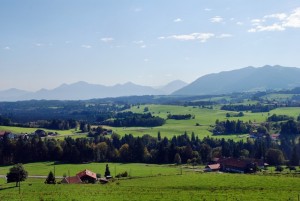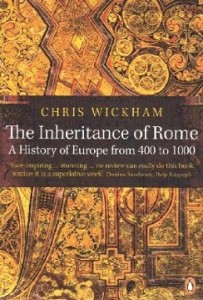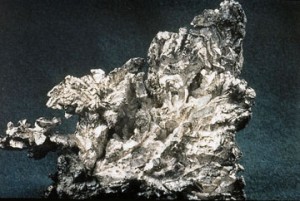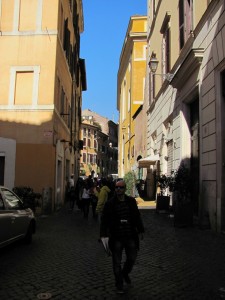Ah, this one’s easy! I’ve written quite a lot on my Roma Nova blog about this as it’s the setting for nine previous books! So I’m going to cheat and repost the piece I wrote about what Roma Nova looks like…

Roma Nova an alpine country with lower lying valleys a few small towns (Castra Lucilla to the south of the main city, Brancadorum at the east, Aquae Caesaris to the west) and a river city full of columns, a forum, Senate house and temples.
Roma Novans don’t have a different name for their capital; like the ancients, they just call it “the city”.
The original Roman architecture from the late fourth century is surrounded by buildings from the intervening centuries, so you’ll see medieval, Renaissance, Biedermeier (Regency in English) and later. More photos here.
If it’s not a real country, how did you dream it up?
Sadly, you can’t use Google maps to view Roma Nova’s geography from space nor load a Wikipedia page for its history. But inventing a country doesn’t mean you can throw any old facts into your book. They have to hang together.
 If you look back to when those first Roman dissidents left Italy in AD 395 and trekked north to found Roma Nova, you can find out quite a bit about Roman life and culture at that time. This gives you a starting point: their mindset, their customs, their concerns, their ways of doing things. For instance, the first chapters of Christopher Wickham’s book The Inheritance of Rome draws a clear and detailed picture.
If you look back to when those first Roman dissidents left Italy in AD 395 and trekked north to found Roma Nova, you can find out quite a bit about Roman life and culture at that time. This gives you a starting point: their mindset, their customs, their concerns, their ways of doing things. For instance, the first chapters of Christopher Wickham’s book The Inheritance of Rome draws a clear and detailed picture.
For a quick overview, you can read ‘Living at the Roman dusk’.
With the Roma Nova books, I’ve used terms that people might already know like the Roman sword, gladius, greeting such as salve, solidi as money, ranks like legate and centurion. But I’ve made the gladius carbon steel, the solidi have currency notes and debit cards as well as coins, and I’ve mixed in other European military ranks such as captain. It gives a sense of history that’s gone forward and adapted to the modern age. Read more about ‘New Romans for old’ here.
Ancient Romans were fabulous engineers and technologists, organised and determined to apply practical solutions to the needs of their complex and demanding civilisation, so I’ve positioned them in the 21st century at the forefront of the communications and digital revolutions.
 The silver mines and processing industry that underpinned Roma Nova’s early economy, and still play an extremely important role in 21st century Roma Nova, are another allusion to ancient Rome. Silver was a big reason the Romans wanted Britannia. Dacia (Romania) and Noricum (Austria) in central Europe were of special significance, as they were very rich in high quality deposits.
The silver mines and processing industry that underpinned Roma Nova’s early economy, and still play an extremely important role in 21st century Roma Nova, are another allusion to ancient Rome. Silver was a big reason the Romans wanted Britannia. Dacia (Romania) and Noricum (Austria) in central Europe were of special significance, as they were very rich in high quality deposits.
Giving Roma Nova silver deposits provides a plausible reason for its economic survival through the ages. I also needed mountains, a river, land where farmers could work vineyards, grow olives, wheat and vegetables, and raise animals. I also wanted my imaginary country to be near Italy and Austria. So it had to be in south central Europe. In the end I pinched Slovenia as my model.
This and a previous post give you a glimpse into the world of Roma Nova. What else would you like to know?
——-
Writing challenges so far:
Day 3: Introducing the main characters Julia and Apulius
Day 2: Introduce your work in progress
Day 1: Starting with revealing information
Alison Morton is the author of Roma Nova thrillers – INCEPTIO, CARINA (novella), PERFIDITAS, SUCCESSIO, AURELIA, NEXUS (novella), INSURRECTIO and RETALIO, and ROMA NOVA EXTRA, a collection of short stories. Audiobooks are available for four of the series. Double Identity, a contemporary conspiracy, starts a new series of thrillers.
Find out more about Roma Nova, its origins, stories and heroines and taste the latest contemporary thriller… Download ‘Welcome to Alison Morton’s Thriller Worlds’, a FREE eBook, as a thank you gift when you sign up to Alison’s monthly email newsletter. You’ll also be among the first to know about news and book progress before everybody else, and take part in giveaways.

















Leave a Reply